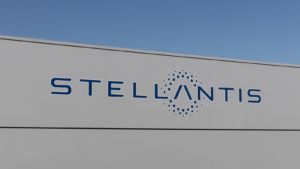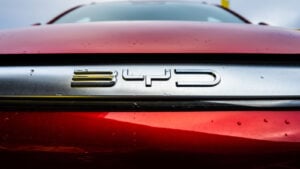The report points to a stabilization in the auto market, as supply chains recover. Moreover, new and used car prices have dropped slightly, and inventories are improving, although relatively lower than historical norms. Additionally, the drop in EV prices has helped spur greater interest in new and used all-electric cars.
Though the industry has shown signs of recovery, the adjustments in pricing and inventory are imperative to consider, along with external factors such as economic downturns. Additionally, investors need to be wary of businesses that haven’t effectively managed these issues or are lagging in the electrification wave.
However, these three best auto stocks to buy represent the best of the lot, offering superb upside potential ahead.
Best Auto Stocks To Buy: Ferrari (RACE)

Italian luxury automaker Ferrari (NYSE:RACE) stands apart with its iconic red sports cars and a loyal customer base commanding premium prices.
Despite the slowdown in consumption appetite, RACE stock has surprisingly been the best-performing stock on the list, surging upwards of 23% year-to-date (YTD). A lot of it is due to its superior execution, which is marked by a positive product and country mix. Moreover, Ferrari continues to fire on all cylinders with increased sponsorship deals, brand investments, and stronger personalization.
It recently posted its second-quarter earnings report, where Non-GAAP EPS came in at ‚¬2.29, beating estimates by over 11.3%. Revenues jumped to ‚¬1.71 billion, a 16.3% increase on a year-over-year (YOY) basis. Additionally, the carmaker generated ‚¬121 million in industrial free cash flow and shipped 3,484 units, pointing to a 2.7% bump from last year.
As we advance, it expects full-year net revenues to exceed ‚¬6.55 billion, up from the previous estimate of ‚¬6.4 billion. Also, it expects its adjusted EPS to be at least ‚¬7.90, up from ‚¬7.50.
Stellantis (STLA)

Stellantis (NYSE:STLA) is an automotive titan that owns some of the most iconic brands, such as Jeep and Peugeot.
Of late, it has been a struggle for the company, with its stock dipping upwards of 34%. A lot of that is linked to its sluggish operating results, with diesel vehicle registrations falling 20.5% in the first-half of the year. Additionally, its net profit has tumbled 48% YOY to ‚¬5.6 billion, weighing down its otherwise superb bottom-line performances.
However, it has an excellent turnaround plan in motion, making it an interesting value play. It plans to save billions by introducing cost-cutting measures, including employee layoffs and producing 750,000 of its cars in low-cost areas in Europe, such as Morocco and Turkey, by 2027. Also, it has plans to launch over 20 new models this year, including promising EVs and hybrids from Jeep.
BYD (BYDDY)

BYD (OTCMKTS:BYDDY) is a giant in the EV space, with a market-leading 18% share in the global EV industry. Despite its stock taking a major hit amidst the broader market slowdown and Chinese economic challenges, BYD is unlikely to remain a laggard for long.
As of May 1, the company reported an encouraging 23.64% YTD increase in passenger vehicle sales, totaling 936,446 units. Pure EV sales rose 17.8% to 434,579 units, while plug-in hybrid sales, comprising roughly 50% of BYD sales, surged 29.2% to 501,867 units. Additionally, while most of its sales are domestic, BYD has been building its presence extensively in Western markets.
Moreover, the firm’s new low-priced Seagull EV has been making major waves in the automotive space. Priced at just $12,000, the Seagull defies expectations, offering a premium feel despite the affordability. Meanwhile, BYD’s new hybrid powertrain in the Seal 06 DM-i model travels 1,200 miles without charging or refueling, surpassing the current average range of roughly 300 miles.
On the date of publication, the responsible editor did not have (either directly or indirectly) any positions in the securities mentioned in this article.
On the date of publication, Muslim Farooque did not have (either directly or indirectly) any positions in the securities mentioned in this article. The opinions expressed in this article are those of the writer, subject to the InvestorPlace.com Publishing Guidelines
Muslim Farooque is a keen investor and an optimist at heart. A life-long gamer and tech enthusiast, he has a particular affinity for analyzing technology stocks. Muslim holds a bachelor’s of science degree in applied accounting from Oxford Brookes University.
